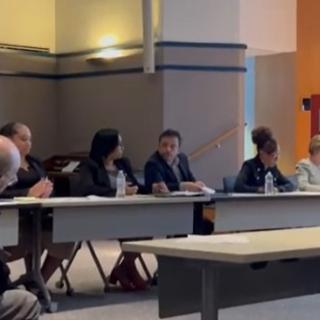In this era of Columbus development explosion, Freep has often been critical of the mixed-use condominiums jammed into some of the city’s most unique neighborhoods.
We also feel some recent developments were much needed in certain areas, such as Italian Village and Grandview. But did the city have to allow off-campus to turn into a lame corporate piano bar and Clintonville’s Indianola Avenue into a Siberia-looking gulag loaded with condo boomers?
Speaking of Indianola, Freep has criticized the city’s lack of effort to save Olympic Pool, which of course was destroyed for a high-end condo with a stunning view of I-71. Clintonville realtor Joe Jackson of Keller Williams Realty told the Freep he just learned – and confirmed just last week – the owners of Olympic Pool had tried to gift the pool to the city, but the city refused.
The city helped save the Crew, but the team’s new stadium could cost the city $100 million. With that commitment we feel saving Olympic and rehabbing it into an updated water park would have been worth any lack of long-term profitability.
Could anything have saved Olympic?
It’s not breaking news our City Council has sold out to developers and handed out hundreds-of-millions in tax abatements to build too many out-of-place mixed-use condominiums.
No surprise was how in 2016 the grassroots Represent Columbus triggered a citywide special vote to change City Council from seven at-large members, where power and influence is centralized, to 13 members, where three are elected at-large and ten from wards who actually live and represent each neighborhood.
The amendment was voted down, but grass-roots efforts to change to a ward system are ongoing. We all know the city has 19 neighborhood commissions, but simply advisory boards when it comes to development.
Thus the second question is, could a city ward system instead of city neighborhood commissions have saved Olympic Pool, off-campus, Clintonville, the Short North, from over-development, where only a few (the very wealthy) benefit?
It’s a complicated question and the answer is not so cut-and-dried. For Clintonville’s Indianola Avenue, for example, one side is residential and the other side, which borders I-71, was mostly light manufacturing. But many of those jobs have gone away and replaced of course by large condominiums.
“There was no universally agreed opinion about what should have or should be built along Indianola,” says Kristopher Keller, the Clintonville Area Commission chair from 2015 to 2016. “In the midst of that confusion the developers and the city just came in and did what they wanted because the community itself couldn’t come up with a unified vision. I don’t know if that dynamic would have been any different with a ward system."
Keller believes the Indianola condominiums are not entirely a bad thing when you consider they abate noise from I-71 and the housing is needed for Ohio State and downtown government jobs. But he would have liked to have seen more green space and to have saved the pool.
“There is a lot that goes outside the public view that influences these decisions,” he says. “With a presence on City Council we would have a better chance at being aware of those influences and how to defend or promote what we want."
Keller, like many others, has an affinity for older, historical buildings. He tried to save the 83-year-old Clintonville Theater on High Street and the 110-year-old Clintonville School near E. North Broadway. Both were demolished during his tenure, however.
The impression is, says Keller, is that because many past City Council members had some connection to Clintonville, is that Clintonville has more influence over City Council compared to other communities, but that’s far from the reality.
“And that’s okay,” he says. “City Council should be looking at the well-being of the city as a whole. But I also thought that the 30,000 people who live in Clintonville would have some say of what was going to happen in their community, but they really don’t. What I tried to explain to the people is that commissions are an advisory board and nothing more, and quite often our advice is ignored.”
Like past mayors and Columbus city councils, Keller believes current leadership has no interest in giving commissions any more power.
“My impression is, there was pressure back in the 70s when the commissions were established to provide more input from the communities in lieu of a ward system, which would have given direct representation. It’s kind of like, ‘Well, we won’t give you wards, but we will give you these commissions and you will have some input into City Council.’ But no real power came with that,” he said.
As mentioned, pushing for a ward system is not going away. The group Everyday People for Positive Change is gathering signatures to force a citywide vote which will add two council members and require each member to live in a district and be elected by the voters of the district, thus creating a ward system.
Progressive activist Joe Motil believes if Everyday People for Positive Change can win the vote, it will save Columbus’s coolest neighborhoods from further over development.
“If this nine district City Council member ballot initiative were to be approved by voters, I have no doubt the unnecessary granting of tax abatements to luxury real estate developers and multi-million and billion dollar corporations in risk free development areas would be entirely eliminated,” said Motil.



